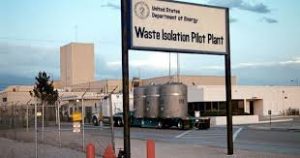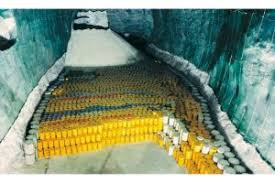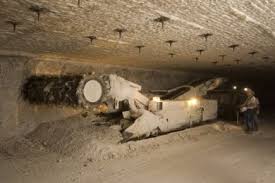
A lawsuit’s been filed by an environmental watchdog group against the government plan for more construction at the country’s only underground nuclear waste repository in the state of New Mexico.
The suit was filed in the New Mexico Court of Appeals by the Southwest Research and Information Center which claims state environmental officials ignored existing regulations in building a new ventilation shaft at the Waste Isolation Pilot Plant located 26 miles east of the city of Carlsbad in the southeastern part of New Mexico.
The group filed its appeal Monday after the state Environment Department granted the temporary approval in a letter sent Friday to officials with the U.S. Energy Department and the contractor that manages the repository according to the Associated Press.
Don Hancock, director of the nuclear waste safety program at the Albuquerque-based nonprofit, said the state’s action was illegal and marked a significant change from past Democrat and Republican gubernatorial administrations that have overseen permitting at the repository.
The Environment Department said in a statement Tuesday it spent a substantial amount of time evaluating the request for temporary authorization and stands by the decision. Agency spokeswoman Maddy Hayden said the approval is limited to the excavation of the ventilation shaft itself and not the use of the shaft.

The department also said the temporary authorization is part of a larger permit modification request that is covered by a public process. A comment period is expected to begin soon and a public hearing will be held if requested.
“My expectation is that DOE and its contractors will more effectively collaborate with stakeholders in New Mexico and have the hard conversations prior to a public hearing — and that time is now,” said state Environment Secretary James Kenney.
Adequate ventilation at the repository has been a big issue since 2014, when a radiation release forced a temporary closure and contamination limited the air flow underground. That prompted the need for a new ventilation system so full-scale operations could one day resume.
The repository sits at the center of a multibillion-dollar effort to clean up waste from decades of U.S. nuclear research and bomb-making. Over more than 20 years, tons of waste have been stashed deep in the salt caverns that make up the southern New Mexico site.

Until recently, several shipments a week of special boxes and barrels packed with lab coats, rubber gloves, tools and debris contaminated with plutonium and other radioactive elements were being trucked to the remote facility from South Carolina, Idaho and other spots. The work has nearly halted as a result of fallout from the coronavirus outbreak and public health orders.
The fight over the ventilation shaft comes as state regulators weigh a proposed permit renewal filed by federal officials at the end of March. The repository’s current permit expires in 2024.
Critics contend the repository was intended by Congress to be a pilot project with a limited lifespan that would be dedicated to disposing of Cold War-era waste. There have been calls to expand the types of waste allowed at the facility and there’s a legal fight pending over capacity and how the drums of waste are counted.
Under the new permit proposa l, critics say the repository could end up operating for decades to come.
The proposal calls for removing references in the permit to the the disposal phase lasting 25 years. Federal officials say the life of the repository will have to be extended to accommodate existing and future waste so there’s no closure date listed.
Nuclear watchdog groups are concerned that part of the push for the $75 million ventilation shaft is tied to financial incentives that would be awarded to the repository manager, Nuclear Waste Partnership, if certain deadlines are met. They also say the new shaft would clear the way for expansion of the repository.
Federal officials expect it to take more than three years to construct and test the shaft, saying workers will benefit from cleaner air the sooner the work starts. Without adequate ventilation, they say mining, maintenance and waste emplacement operations are limited since diesel equipment produces exhaust that needs to be flushed out.
Source: Associated Press





